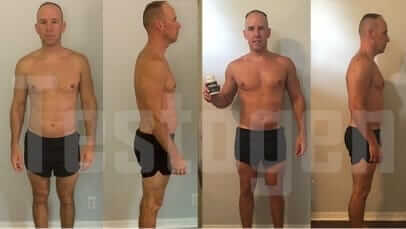Your abs and core are an intricate system of muscle fibers running vertically and across the torso. Forget about six-pack abs for a moment and think a little deeper.
Your transverse abdominal muscle (or TVA) is a deep layer of muscle which lies under the internal obliques and runs across from the lateral to the anterior abdominal wall.
Although you can’t see it, the TVA is incredibly important for strength, stability, and – yes – for that attractive flat and tight midsection. Train your TVA properly and you’ll be one step closer to eliminating lower back issues and that little round lower belly problem. A strong TVA helps your entire core contract for a flatter and smaller waist, a stronger back, and a healthier pelvic floor.
Training the TVA is particularly important for postpartum women, but guys shouldn’t think the TVA doesn’t apply to them. We all have a TVA, and it plays a hugely important role in your body whether you are male, female, young, or old.
The problem with crunches
Traditional sit-ups only work your rectus abdominis, which looks good but doesn’t help to pull your core flat. In fact, if you develop this muscle too much it will actually give you more of a protruding belly because of the natural shape of the muscle. Too many crunches will place excess load on muscles like your psoas, which originates from your lower back. This is why hundreds of sit-ups can give you a sore back – unless you’re also training your TVA properly.
How to train your transverse abdominis
The TVA is a deep muscle, so you need to learn how to engage it before you can work it.
Imagine your TVA as though it was a weightlifting belt, but on the outside. It goes right around your middle just like a wide, tight belt or a corset.
Now think about how you brace your abs when you laugh hard, or how you would tense your abs if someone was going to give you a comedy punch in the guts.
If you’re having trouble connecting with your TVA, get into a plank (resting on your forearms). Make your hands into fists and rock slightly onto the outside of your fists. Now think about pulling your elbows backwards towards your toes and pulling your fists in towards each other. Nothing will actually move, but this is the movement you are aiming for. This will activate your TVA.
It’s time to get that TVA working. Do this exercise on a slidey floor surface like an uncarpeted floor at home or the studio at the gym. Take your shoes off but leave your socks on. Get into a plank position and slide one leg in, with the knee coming to the elbow (leaving the other out in the plank position) and back to the start, then repeat on the other side. Do this 10 times on each side, then rest.
7 Exercises to Perfect Your Summer Body >>
Get back into the plank position and slide both legs together into a pike position, aiming to finish in a yoga downward-facing dog. Slide back to the plank position, keeping control and focusing on having that TVA switched on the whole time.
Advanced TVA movements
Once you can hold a plank and do the movements above with good control and your TVA switched on throughout, try these two moves.
Kneel on the floor and place a yoga block on each side of your knees. Put your hands on the blocks, contract your TVA and pelvic floor, and lock your arms out. Start to bring your knees towards your chest so your feet and shins lift off the floor, and aim to slide your toes outwards across the floor.
For the final exercise, sit on a mat with your feet flat and your knees bent. Contract your TVA and pelvic floor. Lift your toes off the floor and bring your shins parallel to the floor. Advance this move to having your legs straight so that you are in a V position. Take your hands off the floor and hold your arms straight out in front, parallel to the floor and outside your knees.
The Beginners Guide To The Squat >>
Remember, guys, that TVA training is slow and controlled. It’s less about the reps and range of movement and more about connecting with the TVA and keeping it switched on throughout. Trust me, if you get it right, you’ll know that you’ve worked your abs!
Have fun!






